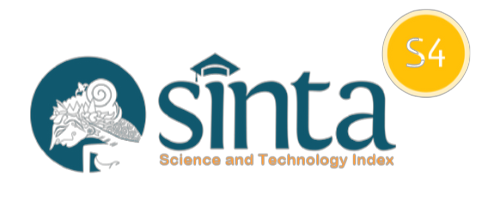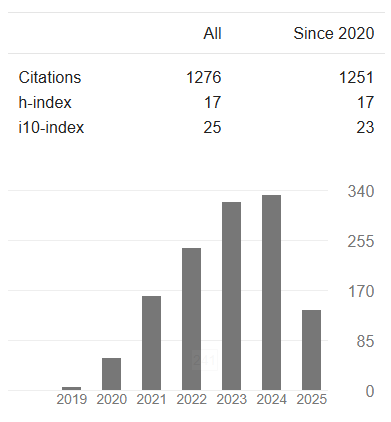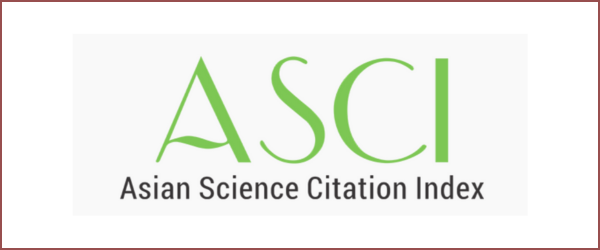Domestic Credit and Inflation Rate Shock: A New Empiric Evidence from Nigeria
DOI:
https://doi.org/10.14421/EkBis.2023.7.1.1649Keywords:
Inflation, Domestic Credit, ARDLAbstract
The study evaluates the relationship between domestic credit and Nigeria's inflation rate analysing data spanning from 1986 through 2020. The research is ex-post in nature, hence the study employed statistical analysis models to build a predictive assessment for inflation, leveraging on the Autoregressive distributed lag model (ARDL) and the Granger Causality test to ascertain the magnitude of the association and the direction of causation, separately. The study confirms the complexities of Nigeria's relationship between domestic credit and inflation, with economic growth maintaining a positive and insignificant relationship with inflation (INF), while credit to the private sector (CPS) and interest rates have a negative and insignificant relationship with inflation in the long run. Furthermore, in the short run the coefficient of error correction model showed a negative sign, suggesting a short run effect between inflation rate and domestic credit. The findings reaffirm the one-way relationship between inflation and private sector domestic credit. It is advised that funding tools be used efficiently and effectively to fulfil desired investment, competitiveness, and economic growth drives.
Downloads
 Abstract viewed: 166 times
|
Abstract viewed: 166 times
|
 PDF downloaded = 242 times
PDF downloaded = 242 times
References
Adegboyega, S. B., Maku, O. E., & Olayiwola, A. I (2019). Inflation and Stock Returns: An Implication for Nigerian Stock Exchange Market Agogo African Journal of Humanities, 6(2019): 1-13.
Adegboyega, S. B., Akinbobola, T. O., Ajayi, F. O. (2021). Capital Flows and Economic Growth: What Role Does Trade Liberialisation Play? Izvestyia Journal of University of Economics- Varna, Bulgaria 65(1), 26-44, DOI: 10.36997/IJUEV2021.65.1.26
Adegboyega, S. B. & Odusanya, I.A (2014). Financial Sector Development and Economic growth; The Nigeria Experience. Scholarly Journal of Business Administration 4(5), 124-131
Aisen, A., Franken, M., 2010. Bank credit during the 2008 financial crisis: a cross-country comparison. International Monetary Fund Working Paper, No. 10/47
Ali, S. A., & Masood, O. (2013). Sensitivity Analysis of Domestic Credit to Private Sector in Pakistan: A Variable Replacement Approach Application with Con-integration. THEMA (THéorie Economique, Modélisation et Applications), Université de Cergy-Pontoise.
Almalki, A. & Batayneh, K. (2015). The Relationship between Inflation and Financial Development in Saudi Arabia. The Journal of Developing Areas, 49(6), 421–427.
Backé, P. & Zumer. T. (2005). Developments in Credit to the Private Sector in Central and Eastern European EU Member States: Emerging from Financial Repression—A Comparative Overview. Focus on European Economic Integration 2: 83–109.
Caglayan, M. & Xu, B. (2016), Inflation volatility effects on the allocation of bank loans. Journal of financial stability. 24:27-39.
Egert, B., Backé, P. & Zumer. T. (2007). Private-Sector Credit in Central and Eastern Europe: New (Over) Shooting Stars? Comparative Economic Studies 49: 201–31.
Eslamloueyan, K. & Darvishi, A. (2007). “Credit Expansion and Inflation in Iran: An Unrestricted Error Correction Model”, Iranian Economic Review, 12 (19), 105-126.
Gozgor, G. (2014). Determinants of domestic credit levels in emerging markets: The role of externals factors. Emerging Markets Review, 18:1–18
Gozgor, G. (2018). Determinants of the domestic credits in developing economies: The role of political risks. Research in International Business and Finance, 46(April), 430–443.
Guo, K., & Stepanyan, V., 2011. Determinants of bank credit in emerging market economies. International Monetary Fund Working Paper, No. 11/51.
Ikpesu, F. (2021). Banking sector credit, inflation and growth in sub-Saharan African countries, Journal of Transnational Management, DOI:10.1080/15475778.2021.1947170
Imran, K., & Nishat, M. (2013). Determinants of bank credit in Pakistan: A supply-side approach. Economic Modelling, 35, 384–390.
Kamil, H., Rai, K., 2010. The global credit crunch and foreign banks' lending to emerging markets: why did Latin America fare better? International Monetary Fund Working Paper, No. 10/102.
Kiss, G., Márton, N. & Vonnák, B. (2006). Credit Growth in Central and Eastern Europe: Trend, Cycle or Boom. Paper presented at the Conference “Finance and Consumption Workshop: Consumption and Credit in Countries with Developing Credit Markets”, Florence, Italy, June 16–17.
Maitah, M., Zedan, K., & Shibani, B (2012). Factors affecting the usage Level of Financial Analysts by credit officers in the credit decision in Libyan commercial banks. International Journal of Business and Social Science. Vol. 3 No. 10
Mankiw, N. G. & Reis, R. (2003). What measure of inflation should a central bank target? Journal of the European Economic Association, 1(5), 1058-1086.
Meslier, C., Risfandy, T., & Tarazi, A. (2017). Dual market competition and deposit rate setting in Islamic and conventional banks. Economic Modelling, 63, 318–333.
Mushtaq, S., & Siddiqui, D. A. (2017). Effect of the interest rate on bank deposits : Evidence from Islamic and non-Islamic economies. Future Business Journal, 3(1), 1–8.
Sanfilippo-Azofra, S., Torre-Olmo, B., Cantero-Saiz, M., & López-Gutiérrez, C. (2018). Financial development and the bank lending channel in developing countries. Journal of Macroeconomics, 55, 215–234.
Tang, T.C. (2001). Bank Lending and Inflation in Malaysia: Assessment from Unrestricted Error-Correction Models, Asian Economic Journal, 15 (3), 275-289.
Uchino, T. (2014). Bank deposit interest rate pass-through and geographical segmentation in Japanese banking markets. Japan and the World Economy, 30, 37–51.
Zermeno, M.A.T., Martinez, F. V. & Preciado,V. H. T. (2014). Growth, Bank Credit and inflation in Mexico: Evidence from an ARDL- Bounds testing approach, Latin American EconomicReview,23(8), 132-140
Downloads
Published
How to Cite
Issue
Section
License
Copyright (c) 2023 Soliu Bidemi Adegboyega, Ibrahim Abidemi Odusanya, Jimoh Sina Ogede, Olayinka Esther Atoyebi

This work is licensed under a Creative Commons Attribution-ShareAlike 4.0 International License.





























 This work is licensed under a
This work is licensed under a 